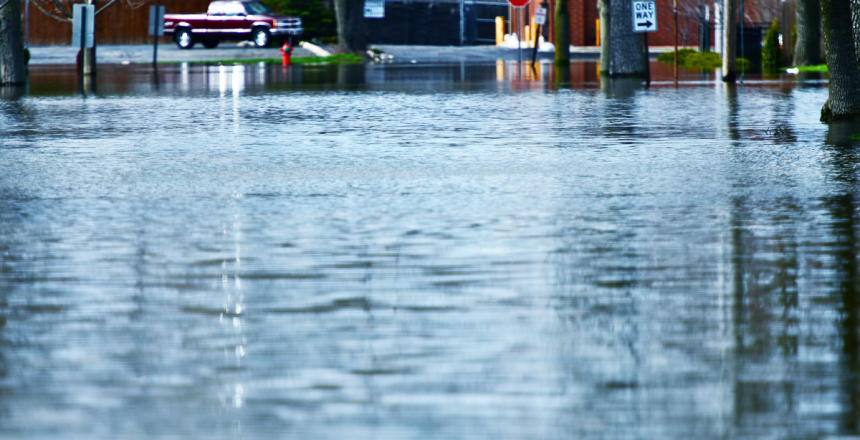Please call to verify MAP pricing as some equipment prices have changed due to current market conditions on fuel, shipping rates or supply chain issues.

While we still don’t have a complete picture of the staggering damage done by Hurricane Ian, we know that it is devastating, and the recovery process will be very long and very challenging. We also know that the work to come can be extremely dangerous.
For Floridians in the pathway of Ian, anything that happened before Wednesday and Thursday may seem like a lifetime ago, but the past gives us insight into the best (and worst) ways to move forward: Following Hurricanes Katrina and Sandy, recovery workers and community members suffered outbreaks of infectious diseases caused by contact with floodwaters contaminated with a host of bacteria and pollutants. Many were also exposed to high levels of mold that caused a rise in respiratory illnesses and long-term health issues.
Katrina, Sandy and other storms taught us the importance of protecting workers and our communities during recovery efforts. Learning from the past guides us forward — we cannot change the disaster, but we can change how we address it. We now know how dangerous recovery work can be but have the tools and equipment needed to safeguard the health of restoration workers and the communities they serve.
Understanding the Risks
We know restoration teams from here in Buffalo and all over the country will be traveling to Florida over the coming days, weeks and months. We’ve already seen images of folks wading in the waters trying to help recovery efforts. Unfortunately, we’ve also seen images of people poorly prepared for the work underway. That’s not just ocean water they are traversing: it’s toxic sewage, incredibly dangerous and poses very real health risks.
Floodwaters take on anything they pass through, from human waste to agricultural pesticides and fertilizers, hospital waste, blood, medications and more. Anyone who makes contact with these floodwaters is at risk of developing health issues both in the immediate and long-term: even a small cut on your leg, when exposed to sewage and toxic waters, can turn into a life-threatening infection.
Our decades of experience in restoration have taught us that water is the worst thing. Fire burns everything up, we clean it and everything goes away. It doesn’t work like that with water. With floods, nothing goes away; it’s all still there and still toxic. Nothing is safe inside or out, and restoration teams and communities have to protect themselves from the dangerous mold and airborne spores that will certainly grow once the waters recede. It’s already starting to grow now.
These risks are not only inherent to restoration work; unfortunately, they are also very real for the communities already dealing with the devastation of losing their homes and businesses. We all know and love people who live in Florida, and we understand that folks want to help. But entering structures damaged by the hurricane is very, very dangerous. We don’t want to see anyone suffer even more and cannot stress enough the importance of using the proper personal protective equipment (PPE) and understanding the risks involved in entering these spaces.
PPE for Flood Cleanup Workers
Selecting the right PPE is absolutely essential for safe recovery and restoration work.
Without taking the right precautions, one day of this work can cause health issues for the rest of your life. You have to go in prepared, and while one house could be fine, the next could be all mold from top to bottom. Preparing for the worst is the only way to protect your health.
We recommend the following PPE for flood response workers:
Boots with steel shanks, toes and insoles. Choose a watertight pair and wear hip waders to avoid contacting flood waters. Steel is essential for protecting your feet from punctures as you navigate areas with little visibility and high levels of debris. Clean waders with soap and water and allow them to air dry between uses.
Cut-resistant heavy duty work gloves. Again, a waterproof pair is essential, but keep in mind that other types of protective gloves may be needed for handling hazardous materials.
Protect your eyes with safety glasses or goggles and consider wearing a full face shield or selecting glasses with side shields.
Wear a protective head cover suited to the environment. This may mean a soft hat or a hardhat if there is a risk of falling debris.
Although the Florida sun will be blazing, we highly recommend wearing long pants and a long-sleeved shirt or coveralls. Clothing should be comfortable, light weight and form fitting.
Finally, to protect yourself from exposure to mold-contaminated environments and materials, we recommend wearing an NIOSH-approved respirator. A respirator is also recommended when working around any biological or chemical hazards.
We are here to offer guidance on PPE, mold-related chemicals, dehumidification, extraction and more. We know that the most important role we can play right now is educating our customers and community in order to keep them safe. Nothing is more important than helping folks understand the dangers that lie ahead and how to best protect our restoration workers, and we are happy to help anyone traveling to Florida to stay safe on the job. If you have any questions, please don’t hesitate to give us a call at 716-674-9860.
Schedule Your Free Product Demo
Interested in learning more about our equipment and supplies in Buffalo? Contact us today to schedule your free demo!
